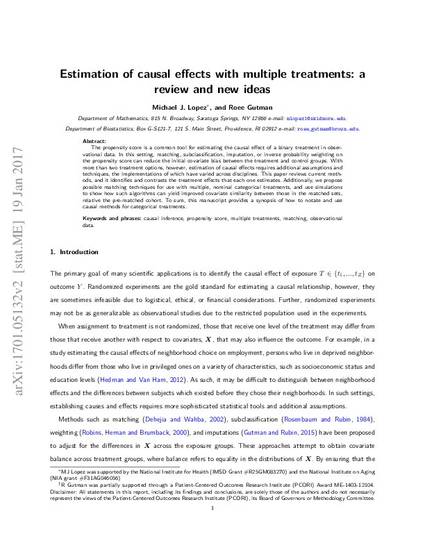
The propensity score is a common tool for estimating the causal effect of a binary treatment in observational data. In this setting, matching, subclassification, imputation, or inverse probability weighting on the propensity score can reduce the initial covariate bias between the treatment and control groups. With more than two treatment options, however, estimation of causal effects requires additional assumptions and techniques, the implementations of which have varied across disciplines. This paper reviews current methods, and it identifies and contrasts the treatment effects that each one estimates. Additionally, we propose possible matching techniques for use with multiple, nominal categorical treatments, and use simulations to show how such algorithms can yield improved covariate similarity between those in the matched sets, relative the pre-matched cohort. To sum, this manuscript provides a synopsis of how to notate and use causal methods for categorical treatments.
